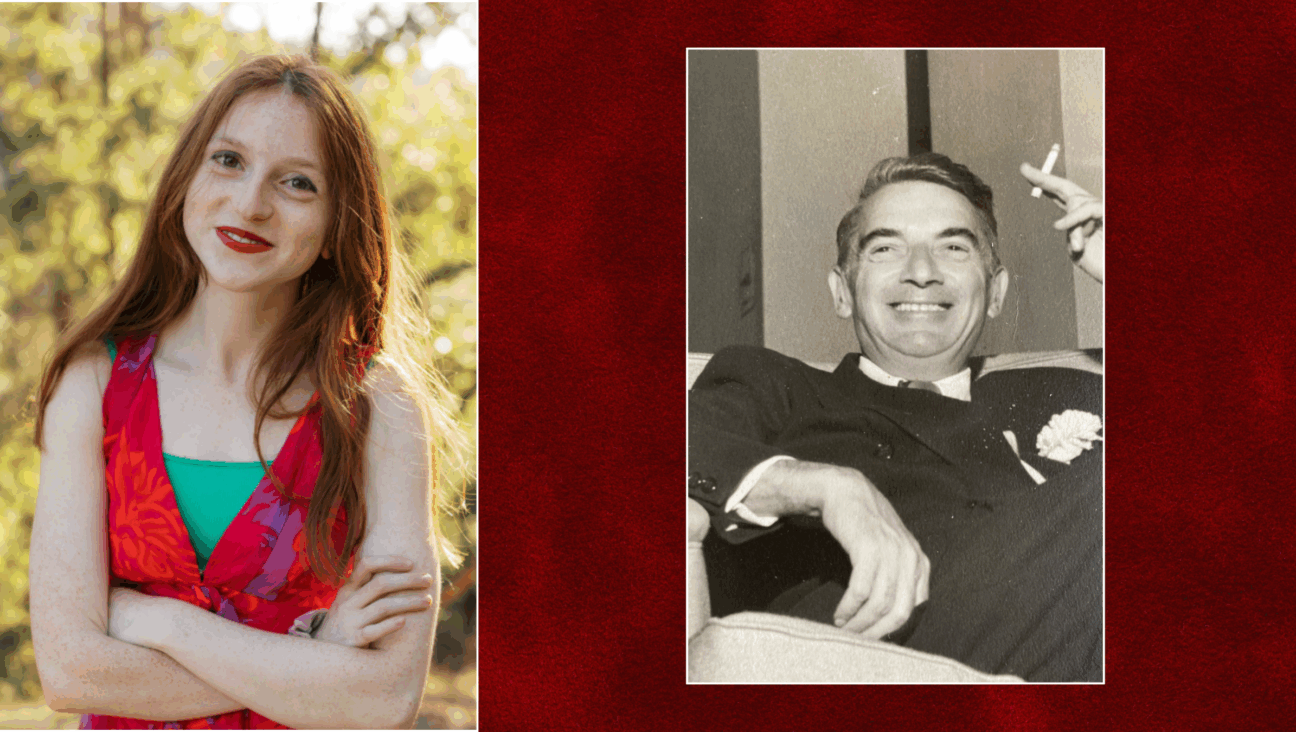How the Yonkers-born son of Jewish immigrants became the king of American comedy
In what could be called ‘Your Biography of Biographies,’ David Margolick chronicles the unlikely stardom of Sid Caesar

Sid Caesar poses in his pool, 1984. Photo by Getty Images
When Caesar Was King: How Sid Caesar Reinvented American Comedy
By David Margolick
Schocken, 400 pages, $35
His comedic DNA is everywhere — The Dick Van Dyke Show, All in the Family, the riffs and routines of Johnny Carson and Larry David. His writers included Mel Brooks, Carl Reiner, Neil Simon and Woody Allen. Even so, when author David Margolick interviewed the 2,000 Year Old Man for his new biography of Sid Caesar, Brooks told him, “People are going to say, ‘Gee, this is really good and really interesting. Just one question, David: Who’s Sid Caesar?’”
Now the book is out, and Margolick, a longtime New York Times and Vanity Fair writer, has put the question to rest. When Caesar Was King: How Sid Caesar Reinvented American Comedy is a lively and thoroughly engrossing account of who Caesar was, why he was so important, and how he transformed American comedy with his short-lived (1950-1954) but influential TV program Your Show of Shows.
At the peak of the show’s popularity, Caesar was the most highly paid comedian in America. Some 20 million people tuned into NBC every week to watch the program that was broadcast live on Saturday night from a studio in midtown Manhattan two decades before Saturday Night Live. The variety show featured film spoofs, pantomime, and sketches in which Caesar played a beleaguered husband opposite the brilliant Imogene Coca with her rubbery, “wonderfully flexible face,” as one critic put it.

Despite their comedic hijinks, Margolick repeatedly makes the point that Caesar, who died at age 91 in 2014, was “the unlikeliest of comics: introverted, ill at ease, tongue-tied.” Larry Gelbart, a writer for Caesar who went on to create the hit TV series M*A*S*H in the 1970s, described his boss’ personality as “zero, non-existent.” According to Simon, he was “extremely smart but completely inarticulate.” Even so, he could bring down the house by impersonating everything from an imperious German general to a fly crawling on a piece of feta cheese. He had what another one of his writers, Howard Morris, called a “meshugana energy.”
Though nothing about Your Show of Shows was overtly Jewish, Margolick makes a convincing argument that Caesar’s humor was intrinsically Jewish and that Jews across America read it as such. Among other things, it was Jewish in its “literate, detached, irreverent” point of view, in its “resentment toward the establishment and sympathy for the underdog,” and “in its obsession, born of privation, with food.”
Caesar grew up in Yonkers, New York, the son of Jewish immigrants from Poland and Russia, who ran a rooming house and luncheonette. Since the eatery catered to laborers, many of them foreign-born, Margolick speculates that Caesar, who didn’t learn to talk until he was 3, developed his uncanny ability to mimic foreign languages — his signature double-talk — by absorbing the “sounds and sensibilities” of the conversations he overheard while busing tables.
After a deadbeat boarder left behind a saxophone, young Sidney learned to play it, eventually offering him a way out of his straitened circumstances. Soon he was playing gigs in the Catskills, where he branched out into comedy to earn a little extra money. By the 1940s, Caesar was back in New York, where he had the great good fortune to meet the Viennese-born Max Liebman, who had been producing musical revues at a resort in the Poconos and thought Caesar was “the finest comic talent since Charlie Chaplin.” Liebman would go on to direct Your Show of Shows and, more than anyone else, make Sid Caesar a star.
But the toll of producing a 90-minute live show over 30-odd weeks for more than four years was tremendous. By its fourth and final season, Your Show of Shows couldn’t sustain the level of brilliance and innovation it had achieved during the so-called golden era of live television production in the 1950s. Audiences were changing as more and more Americans outside the big cities, mostly in the Northeast, were acquiring TVs, and their taste skewed more in the direction of the bandleader and accordionist Lawrence Welk.
Caesar turned 32 during the last year of Your Show of Shows and would go on to headline other shows including Caesar’s Hour and Sid Caesar Invites You, the latter briefly reuniting him with Coca. But by the 1960s, he was largely off the air, grappling with alcoholism, depression and an addiction to pills.
In what is overall a tender and sympathetic portrait, Margolick doesn’t shy away from showing Caesar’s dark side, offering a complex portrait of an enigmatic genius who seemed to be just as much of a mystery to himself as he was to others. Beautifully written and brimming with life, this book establishes Margolick as one of the ultimate mavens of an era of American Jewish history in the mid-to-late 20th century that has all but ceased to exist.
















